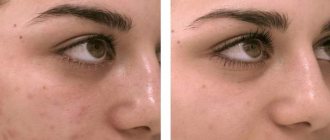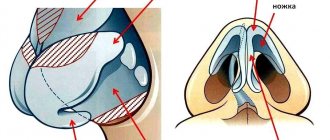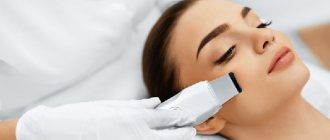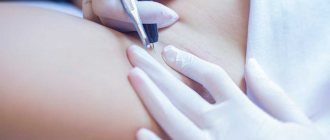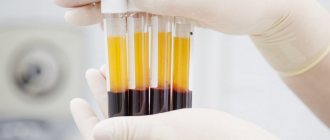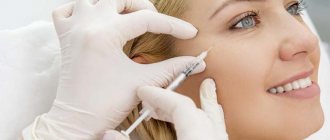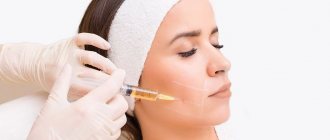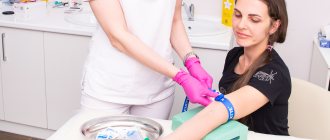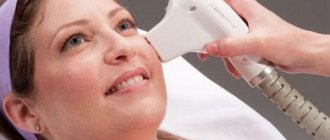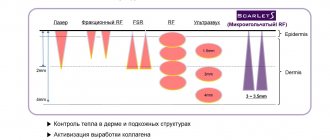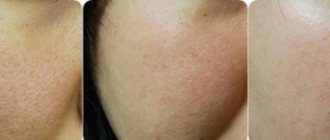Gynecological diseases and various disorders in the functioning of the female reproductive system are among the most common today. Moreover, they are the ones that cause the greatest concern among women of different ages. Most of these pathologies are treated with medication, and in some cases it is necessary to resort to invasive methods of intervention. And to increase the effectiveness of the measures taken, gynecologists often recommend that patients undergo a course of plasma lifting. This procedure is familiar to most women, but as a method of rejuvenating facial skin and solving a number of dermatological problems. But not everyone knows about the possibility of its use in gynecology. Nevertheless, PRP therapy has no less pronounced biostimulating effect on the tissues of the genital organs than on the skin of the face. This makes it possible to improve the course of many diseases and even eliminate inevitable age-related changes, which helps eliminate unpleasant symptoms, improve well-being, and improve the quality of sexual life at any age.
Indications for use in gynecology
Plasmolifting is an injection procedure during which a specialist injects microdoses of the patient’s own plasma into a specific area.
This technique is indicated for various inflammatory or infectious gynecological diseases. Plasmolifting gives positive results even with chronic pathologies; many women note that thanks to plasmolifting they can achieve long-term remission.
Let's consider the main indications for the procedure:
- Atrophy of the vaginal mucosa;
- Any pathology of the female genitourinary system, except for malignant neoplasms;
- Endometritis;
- Lack of normal growth of the uterine endometrium;
- Age-related changes in the labia (sagging, stretching, increase in size);
- Prolapse of the vaginal walls.
It is also worth noting that plasma lifting is actively used during menopause, after childbirth or surgery as an additional treatment measure. It can also be used to prevent inflammatory diseases of the external and internal genital organs.
What is plasma lifting
Plasmolifting or PRP therapy is an injection procedure that involves introducing into the tissue the patient’s own blood plasma, separated by centrifugation. The main objective of the method is to stimulate natural regeneration processes, since blood plasma contains proteolytic systems that help maintain the constancy of the internal environment and activate the body's adaptive and protective reactions. The use of the patient’s own biological material ensures 100% biocompatibility and almost completely eliminates the possibility of developing an allergic reaction. This makes the procedure completely safe and reduces the number of contraindications to a minimum.
Plasma is a liquid intercellular substance of blood that can be separated using special technology. When centrifuged in test tubes, the blood is separated along a density gradient into red blood cells and plasma, which contains platelets and clotting factors.
The history of the invention of plasma lifting goes back more than 100 years ago, when antibiotics had not yet been isolated, and the patient’s own blood serum was used to treat pneumonia and other severe infections. Today, autologous blood plasma has found active use in all areas of medicine, including cosmetology and gynecology, and its effectiveness and safety are confirmed by the results of tests and studies.
They show that autologous plasma, i.e. obtained from the patient’s own blood, has a complex of positive effects on tissues. It contains a high concentration of platelets, which are elements of the blood. These cells act as a natural tool for the body to activate regeneration processes, and also have antibacterial, analgesic, and anti-inflammatory properties.
Studies have proven that autoplasma becomes a source of natural growth factors, cytokines, various macro- and microelements, vitamins, amino acids, and ensures the creation of a high concentration of these compounds at the injection site.
One of the most important components of plasma are platelet-derived growth factors:
- insulin-like (IGF);
- platelet-derived (PDGF);
- epidermal (EGF);
- fibroblastic (FGF);
- endothelial cell growth factor (vEGF);
- placental cell growth factor (PLGF -1/-2);
- transforming factor β (TGF-β);
- transforming factor α (TGF-α).
They provide anti-inflammatory, antibacterial effects, as well as activation of regenerative processes at the injection site, including in the mucous membranes of the female genital organs. This helps eliminate various inflammations, dystrophic changes and accelerates tissue restoration. At the same time, PRP therapy provides a lasting therapeutic effect and allows you to reduce the duration of treatment.
In general, the mechanism of action of plasmolifting can be compared with the process of forming a hematoma or bruise, i.e. creating stress for tissues. This mobilizes the body’s defenses and forces it to actively fight the changes that have arisen at the site of plasma injection. At the same time, the maximum concentration of growth factors is created in this area, which ensures a therapeutic effect.
To ensure coverage of the entire area with pathological changes, PRP therapy uses the principle of a “therapeutic bag”. Its essence is to envelop the affected area with plasma, which is achieved through a series of injections around the area.
You can evaluate the result of plasma lifting after the first procedure. But to get the maximum effect, you need to take a course, the duration of which is calculated individually. For chronic diseases, it is recommended to repeat them 3-4 times a year.
Advantages of the method
Plasmolifting is popular among doctors and patients. This popularity is associated with a number of advantages:
- Safety. This technique has a minimal list of contraindications and does not cause side effects (since the biomaterial for plasma lifting is taken directly from the patient);
- Efficiency. Plasmolifting significantly increases the effectiveness of other therapeutic measures used to treat gynecological pathologies. The introduction of plasma has a positive effect on the health of the female reproductive system.
- Painless. This manipulation is painless and takes minimal time. It is also worth noting that plasma lifting is carried out on an outpatient basis, and after the procedure the woman can go home.
- Improving the quality of sexual life. Plasmolifting in gynecology has a huge number of advantages. For example, it helps improve blood circulation, activates collagen production, and also increases the tone of intimate muscles.
- Versatility. The technique has no age restrictions, so it can be useful for both young girls and women in adulthood.
How does the procedure work?
Before the first plasmolifting session, a woman undergoes a standard gynecological examination for acute infections and inflammations. If necessary, you will first need to normalize the vaginal microflora with medication.
REFERENCE ! When preparing for the procedure, a consultation with a gynecologist is necessary to determine the required number of injections and their frequency to consolidate the result.
Next, 60 ml of venous blood is taken from the woman and placed in a centrifuge, where the plasma is separated from the solid substance. The result is plasma rich in vitamins, proteins and platelets, which is injected subcutaneously or directly into the vaginal tissue or cervix using a very thin needle.
The procedure is painless, but you can request the use of local anesthesia if desired.
Possible contraindications
In some cases, the plasma lifting procedure cannot be performed. The following conditions are contraindications:
- Malignant neoplasms in the body;
- Autoimmune pathological processes;
- Pregnancy and lactation period;
- Menstruation;
- Acute inflammatory or infectious processes.
Despite the fact that plasma lifting has no age restrictions, experts say that there is no need to carry it out before the age of 18. Optimal age for the procedure: 25 - 55 years.
How does plasma therapy work?
Platelets are one of the types of blood cells that have biological characteristics. They not only promote blood clotting, but also contain proteins that can stimulate cell division and thus trigger tissue regeneration. Scientifically speaking, platelets “regulate key mechanisms involved in the healing process, including cell migration, proliferation and angiogenesis.” This property of platelets is used in plasma therapy.
Concentrated platelets introduced into your own body begin to stimulate the growth of new cells - fibroblasts and muscle fibers. An increase in the number of these cells restores damage to the skin and mucous membranes, increasing the elasticity and turgor of the skin.
Preparatory stage
The first stage of preparation for plasma lifting is a consultation with a doctor. The specialist will collect anamnesis, after which he will definitely conduct a gynecological examination. This is necessary in order to exclude acute conditions.
In addition, you need to pass some tests:
- General and extended blood test;
- Blood clotting test;
- Blood for HIV, hepatitis, syphilis;
- Submitting a smear for cytology.
If necessary, the list of studies can be expanded according to the doctor’s decision.
And a few more tips:
- 5-7 days before the procedure, it is necessary to exclude sexual activity or resort only to protected contacts.
- Talk to your doctor about taking hormonal and blood thinning medications if you are taking them.
- A week before the procedure, it is recommended to start drinking more fluids and also give up alcohol.
- Before visiting the clinic, standard hygiene procedures are required.
Remember that plasma lifting is not performed during menstruation. Therefore, it is worth taking this into account in advance when planning the date of the procedure.
How much does plasma lifting of intimate areas cost in Moscow?
Today you can find a large number of reviews about the procedure. Most of them have an exclusively positive side. According to statistics, more than 40% of women note an improvement in the condition of their intimate areas after the first plasma lifting session. After completing the entire course, as a rule, the main problems in the gynecological field can be solved.
The cost of one test tube at Diamed clinics in Moscow ranges from 5,500 rubles, depending on the clinic. You can obtain additional information from our administrators by calling the clinic closest to you. Waiting for you!
Effect
After plasma lifting, many girls notice a number of positive changes:
- The tone of the vaginal walls improves significantly;
- Increased sensitivity in intimate places;
- The natural production of lubricant is normalized;
- It is possible to get rid of dryness and itching in the intimate area;
- The intensity of inflammatory processes decreases;
- The recovery process after childbirth and various operations is significantly reduced.
Despite the fact that plasma is imported pointwise, this procedure has a positive effect on the entire body.
Indications for the use of platelet-rich autoplasma
In obstetrics and gynecology, autoplasma therapy is used in the following areas:
- surgeries to correct urinary incontinence;
- therapy for genital prolapse;
- treatment of scars on the uterus after cesarean section;
- therapy of tubo-peritoneal infertility;
- reconstructive operations on the uterus;
- treatment of wound process;
- therapy of adhesions;
- treatment of leukoplakia, cervical erosion.
The use of tPA is especially important in cases where the pathology is aggravated by the syndrome of undifferentiated connective tissue dysplasia. The use of autoplasma after operations accelerates regenerative, wound healing and restoration processes in tissues.
Autoplasma promotes the growth of the endometrium in the uterus, which increases the likelihood of pregnancy as part of the use of assisted reproductive technologies (in particular, IVF).
Rehabilitation
In most cases, plasma lifting is well tolerated and does not cause any negative reactions.
After this manipulation, it is recommended to follow several rules:
- It is recommended to abstain from sexual activity for 3-4 days after the procedure;
- Do not use cosmetics for intimate care for several days after the procedure;
- You should also limit taking a hot bath, it is better to use a shower, then gently pat the intimate area with a towel, avoiding friction;
- Wear underwear made of natural material, it is better to choose cotton and avoid synthetics;
- During the week after the procedure, it is not recommended to visit baths, saunas, swimming pools, open reservoirs and solariums.
You can find out more detailed information about plasma lifting during a face-to-face consultation with a specialist. Be healthy!
How often should injections be given?
In order for such treatment to bring good results, it is necessary to undergo a course of procedures. Typically, in order for a woman’s condition to improve and gynecological problems to subside, 5 to 10 injections need to be given. The amount is determined individually by your doctor. Plasmolifting of intimate areas is carried out according to a special scheme. After which you will need, if desired, to maintain the effect, make one-time injections at intervals of once every 3-4 months.
If you are pursuing aesthetic goals and want to slow down the aging process, then one procedure every few months is enough. To eliminate signs of aging and restore youthfulness to the intimate area, gel therapy is used. Your gynecologist will give you recommendations during your consultation.
Platelet autoplasma in the treatment of vulvar pathology in perimenopausal women
Mekan Orazov, gynecological surgeon, candidate of medical sciences, associate professor, certified trainer, scientific consultant on injection technologies, Moscow, Russia
annotation
A consequence of the changing demographic situation in modern society in recent years has been a noticeable increase in the number of patients with dystrophic diseases of the vulva, including children and women of reproductive and perimenopausal age. Atrophic changes in the tissues of the external genitalia often have severe clinical manifestations and are accompanied by neuropsychiatric disorders, significantly reducing a woman’s quality of life. Therapy of dystrophic diseases of the vulva is one of the complex and not fully resolved problems of practical gynecology, which emphasizes the urgency of the search for modern effective treatment methods. The tPA therapy proposed by the author makes it possible, statistically significantly, to effectively level the symptoms of vulvar dystrophy in the anogenital zone in women of perimenopausal age, and thereby significantly improve the quality of life of our patients.
1. INTRODUCTION
The problem of treating background and precancerous diseases
vulva remains relevant due to the insufficient effectiveness of existing treatment methods, the duration of the disease and the severity of the course, as well as the likelihood of malignancy. The likelihood of developing vulvar cancer against the background of lichen sclerosis and squamous cell hyperplasia of the vulva has not been definitively established and, according to a number of authors, varies widely from 1-2%[2]
Despite the wide range of applied options for conservative treatment of this pathology, their effectiveness remains relatively low. Existing conservative methods, while reducing the painful symptom of itching of the external genitalia, do not provide complete elimination of local morphological manifestations of the disease, do not provide long-term remissions, and require long periods of treatment.
2. PATHOLOGICAL CHANGES IN THE SKIN OF THE VULVARA REGION IN PERIMENOPAUSAL WOMEN
Pathological changes in the skin of the vulvar area in women of perimenopausal age are represented primarily by dystrophic lesions - lichen sclerosus, hyperplastic dystrophy, as well as a number of other skin diseases that are not always easy to classify [1]. Today it has been decided to abandon the term “vulvar dystrophy”, and hyperplastic degeneration of the integument of this area is colposcopically represented as keratosis [2]. Many dermatoses can occur on the skin of the vulva, which are localized in other areas of the skin, however, the clinical manifestations of these dermatoses in this localization have their own characteristics that must be taken into account in differential diagnosis.
Lichen sclerosis (LS) of the vulva
Changes in the vulva, formerly called vulvar kraurosis, are now called lichen sclerosus. Lichen sclerosus (LS) of the vulva was first described in 1887. This is a chronic relapsing disease accompanied by atrophy of skin structures and itching in the anogenital area, which leads to scratching and secondary destruction of vulvar tissue [3].
The true prevalence of LS is difficult to determine due to the infrequent or late visits of patients to doctors of various specialties (dermatologists, gynecologists, urologists, therapists, surgeons), as well as due to problems with diagnosing the disease. The prevalence of LS is thought to be between 1 in 70 and 1 in 1000 women. At the same time, a bimodal distribution of the incidence of LS is typical - in prepubertal girls and postmenopausal women [1, 2]. “Isolated” extragenital skin lesions are observed only in 6% of cases [4].
The disease is accompanied by dysfunction and a high risk of malignancy. Spontaneous remission occurs rarely, which requires effective treatment. If not adequately treated, LS can cause significant physical, emotional and sexual discomfort. Unfavorable outcomes include irreversible destruction of the anatomical architecture of the genitals, tumor transformation with malignancy and the development of squamous cell carcinoma [5].
Unfortunately, diseases of the vulva often go undiagnosed and are not adequately treated. We have to admit that today there is no universal, highly effective treatment regimen that allows not only to quickly relieve the symptoms of LS, but also to achieve sustainable long-term remission [1]. However, early effective treatment can prevent destruction of anatomical structures and the risk of developing squamous cell carcinoma [2]. Traditional therapy with topical corticosteroids is accompanied by the development of tolerance to the drugs used, which is accompanied by a pronounced atrophogenic effect and a high risk of relapses. However, today an alternative treatment regimen for LS has emerged - the use of platelet autoplasma (TAP).
2. RATIONALE FOR THE USE OF TAP IN THE TREATMENT OF VULVAR PATHOLOGY
The choice of the optimal treatment method should primarily be based on basic knowledge of the etiology and pathogenesis of the disease. In the case of treatment of LS, this choice is complicated by the lack of precise knowledge about the specific pathogenetic mechanisms of its development. But at the same time, it is clearly known that LS is associated with atrophic changes in tissues, in other words, with a decrease in their regenerative potential.
The optimal way to treat this disease seems to be the methods of regenerative medicine, of which the most accessible and economically feasible today is the use of platelet autoplasma. The use of tPA is considered a revolutionary step in the development of regenerative medicine [6]. Essentially, tPA is a concentrate of autologous plasma enriched with platelets. Hormones, biologically active molecules, vitamins and microparticles contained in blood plasma in combination with platelets stimulate tissue regeneration and promote their optimal remodeling.
The first experiments using platelet-rich plasma were carried out in the USA several decades ago, and to date tPA therapy is one of the key areas of local anti-age medicine. It is used in cosmetology, dermatology, maxillofacial surgery, sports medicine, rheumatology, traumatology, and orthopedics. In Russia, the optimization of the injection technique of tPA therapy was carried out by Renat Rashitovich Akhmerov and Roman Feliksovich Zarudiy [7]. The technology they developed for obtaining and the method of using platelet-rich plasma is today successfully used in cosmetology, trichology, sports medicine, maxillofacial surgery, dentistry and gynecology [7, 8].
Used as the main means of influencing tissue, tPA makes it possible to influence the processes of inflammation and repair of vulvar skin structures, ensuring the restoration of the structural organization of tissues. In this case, the purposes of using TAP are:
- resolution or limitation of inflammation;
- normalization of neuroimmune connections leading to the development of itching;
- stimulation of intrinsic progenitor stem cells, including epidermal stem cells, mesenchymal stem cells, and connective tissue progenitor cells;
- stimulation of angiogenesis and improvement of trophism of vulvar skin tissue;
- balanced stimulation of the processes of proliferation and differentiation of epidermal cells;
- optimization of dermal remodeling aimed at eliminating scar changes and restoring histoarchitecture.
Thus, the use of tPA makes it possible to fully realize the own regenerative potential of vulvar tissue with the help of morphogenetic factors accumulated in platelets. In this case, platelets not only participate in the hemostatic system, but are also capable of modulating the course of inflammation, providing additional immune protection of the skin and mucous membranes, and stimulating the repair and remodeling of damaged tissues.
3. ESSENCE OF TAP THERAPY
The essence of tPA therapy is the injection of autoplasma with a high platelet content into the tissue of the target organ, which allows stimulating remodeling processes in the affected area. Today, tPA is already actively used in gynecology in the treatment of diseases of the cervix (endocervicitis, erosion), leukoplakia, and lichen sclerosus [7, 8, 3]. The method has been approved by the Ministry of Health and Social Development, and the equipment for the production of tPA is registered and approved for use in the Russian Federation.
The day before the procedure, it is necessary to exclude fatty and fried foods and foods with a high content of preservatives from the diet. Blood is drawn in the morning on an empty stomach from the ulnar vein. For the correct and safe use of the tPA method, it is extremely important to use only certified specialized equipment and high-quality consumables - tubes, centrifuges, syringes and needles [7].
To obtain tPA, intended for subcutaneous and intradermal injections, the patient's blood is taken into a special Plasmolifting™ tube (manufacturer company, Plasmolifting™, Moscow, Russia). Biotechnological tubes contain an anticoagulant - highly purified fractionated heparin and a biologically inert (thixotropic) gel, ensuring a clear separation of blood fractions along a density gradient, while maintaining the healing properties of plasma. Plasmolifting™ tubes are made from high-quality medical borosilicate glass using a special technology and are tightly closed with a stopper, which reliably ensures the sterility and unchanged composition of the internal contents, as well as the preservation of the vacuum inside the tube. Plasmolifting™ tubes are certified by the Federal Health Service and have passed quality tests in Germany, Russia, Belarus, Ukraine, Kazakhstan, Uzbekistan, Iran, Latvia, Lithuania, Estonia and Cyprus. Their high quality is also confirmed by ISO and CE certificates issued by one of the most authoritative German certification organizations TUV.
To obtain tPA, 10 to 20 ml of peripheral blood is taken from the patient. The process of obtaining tPA is automated, takes about 5 minutes and involves centrifugation. This allows you to obtain plasma with a platelet concentration of up to 950–1200 thousand cells per 1 ml of plasma at room temperature. Immediately after isolation, tPA is injected into the patient’s dermis according to a certain scheme. The procedure itself (tPA injections) takes about an hour and does not require general anesthesia; local anesthesia is possible if necessary.
4. AUTHOR’S METHOD OF TAP THERAPY FOR VULVAR PATHOLOGY
Materials and methods
The study involved 60 patients aged 43.5+6.2 years with grade 1–2 LS.
Criteria for inclusion in the study:
- established diagnosis of vulvar LS;
- perimenopausal age of the patient;
- negative PAP test;
- satisfactory vulvoscopic picture (no abnormal areas, with the exception of VIN); (vulvar intraepithelial neoplasia)
- negative test for HIV and HPV (human papillomavirus);
- signing informed consent for treatment.
Exclusion criteria from the study. Patients were excluded from the study if they had:
- decompensated chronic diseases of internal organs;
- viral hepatitis;
- diabetes mellitus;
- systemic blood diseases;
- inflammatory and pustular skin diseases;
- severe tissue ptosis, which can only be corrected surgically;
- immunodeficiency states;
- mental disorders.
Half of the participants (30 patients) received classical treatment using topical corticosteroids (control group), the other 30 patients received treatment using tPA (main group).
Patients of the main and control groups were comparable in terms of demographic characteristics and a set of external factors, including bad habits and the presence of concomitant pathology (Table 4).
Table 4. Demographic and other characteristics of patients
| Index | Main group | Control group |
| Weight | 83,10±1,7429 | 84,30±1,38 |
| Age | 51,90±0,8728 | 52,10±0,50 |
| Menopause (age) | 5,670±3662 | 4,40±0,33 |
| Height | 168,800±0,4457 | 169,30±0,44 |
| Concomitant pathology | ||
| Arterial hypertension | 18 (60±8,9%) | 18 (60±8,9%) |
| Autoimmune thyroiditis | 6 (20±7,3%) | 6 (20±7,3%) |
| Obesity | 17 (56,67±9,05%) | 19 (63,33±8,79%) |
| Signs of virilization | 12 (40±8,41%) | 10 (33,33±8,60%) |
| Pathology of the musculoskeletal system | 10 (33,33±8,60%) | 9 (30±8,36%) |
| Smoking | 13 (43,33±9,4%) | 15 (50±9,12%) |
| Alcohol consumption | 6 (20±7,3%) | 5 (16,67±6,8%) |
| Stage SL – 2 | 12 (40±8,41%) | 12 (40±8,41%) |
| Stage SL – 3 | 18 (60±8,9%) | 18 (60±8,9%) |
Author's method of tap therapy for lichen sclerosus
It should be noted that tPA therapy of the external genitalia has a pronounced dose-dependent nature: when using a larger amount of plasma, a more significant clinical effect develops.
The procedures are indicated for the treatment of women with LS during perimenopause and are carried out in courses. The course of tPA therapy includes three to four injection sessions with an interval of 1 month.
When performing the first procedure of the course, four certified Plasmolifting™ tubes are used, the total volume of injected plasma is 18 ml. During subsequent sessions of tPA therapy, you can use a smaller amount of plasma (3 tubes - 13.5 ml).
After the first procedure, patients are recommended to use certified Plasmolifting™ TAP serum (manufacturer company, Plasmolifting™ Russia, Moscow). It is applied externally to the vulvar area, in a thin layer, once a day (at night), for 14 days.
After the second session, certified Plasmolifting™ TAP suppositories are prescribed (manufacturer company, Plasmolifting™ Russia, Moscow) for vaginal administration. They are used vaginally, once a day (at night), for 10 days.
After the third treatment session, it is recommended to combine the use of certified Plasmolifting™ TAP serum and certified Plasmolifting™ TAP suppositories. Both products are used for 3 weeks (21 days).
A follow-up examination is carried out one month after the last tPA therapy procedure. To assess the long-term results of treatment, an examination is carried out after 6–12 months.
Procedure execution protocol
Blood is collected in a volume of 18–36 ml using a peripheral venous catheter with a diameter of at least 1.1 mm in 4 tubes.
Obtaining platelet autoplasma: the tubes are placed in a centrifuge, which rotates at a speed of 3200 rpm for 5 minutes. The supernatant (SNA) is taken with a syringe - the layer located in the upper part of the tube above the separation gel.
Preliminary cleansing and antiseptic treatment of the skin with a 0.05% solution of chlorhexidine or miramistin.
Topical anesthesia – 5% Emla cream.
Intradermal injection of plasma: plasma is injected into the affected areas of the skin of the vulva and perineum using 31-32 G needles with a length of 6-13 mm.
The injection technique is predominantly papular and micropapular, injections are performed from the center to the periphery in all problem areas, the distance between the injection points is 8–10 mm. The needle is inserted at an angle of 45º to a depth of 4–6 mm.
Post-injection skin treatment: cleansing with chlorhexidine solution followed by application of Traumeel C cream, which has anti-inflammatory, anti-exudative and reparative effects.
Methodology for evaluating results
To assess the effectiveness of LS therapy, a comparative retrospective analysis of short-term (within 3–4 weeks) and long-term (within 3–6 months) results of traditional treatment using topical corticosteroids and innovative therapy using tPA was carried out. We paid attention to the general condition and local changes in the anogenital area of the study participants. At the same time, the influence of the applied treatment methods was compared on the visual parameters of the skin condition of the anogenital area (presence and intensity of pigmentation, healing of erosions and cracks, moisture/dryness, elasticity and turgor of the skin), which were assessed during examination by a gynecologist, as well as on subjective complaints reflecting the course of the pathological process in LS – itching, dyspareunia, dysuric disorders. The “end points” were semi-quantitative assessments of the main symptoms of LS, including itching, dyspareunia and the severity of dysuric disorders, using a 5-point visual analogue scale for assessing the severity of symptoms. In addition, the frequency of relapses in the long-term period was assessed - 1.5 years after the start of treatment.
To assess the effect of different treatment methods on the condition of the skin, a semi-quantitative method was used using the adapted GAIS (Global Aesthetic Improvement Scale) scale (Table 5) [6].
Table 5. Scale for assessing improvement in the condition of the skin of the anogenital area
| Degree of improvement | Description |
| 1 – marked improvement | Significant change in skin characteristics upon examination |
| 2 – significant improvement | Significant but not fully expressed improvement |
| 3 – improvement | Presence of signs of positive dynamics: the skin has improved compared to the state before treatment, but additional correction is required |
| 4 – tolerance to treatment | Maintaining original skin characteristics, lack of response to therapy |
| 5 – deterioration | The appearance of signs of deterioration of the skin condition (atrophy, depigmentation, hair loss) |
The obtained data were analyzed using the statistical computer program MedCalc version 12.3 (MedCalc Software Inc, Broekstraat, Belgium).
5. RESULTS AND DISCUSSION
The results of the study showed that in patients with LS the frequency of autoimmune pathology was 20±7.3%. The most common types of comorbidities were arterial hypertension, obesity and disorders in the musculoskeletal system (see Table 4), which requires future analysis of the role of these conditions and the leading pathogenetic factors of their development in the pathogenesis of LS.
Assessment of the initial severity of itching, dyspareunia and dysuria did not reveal statistically significant differences in the main and control groups.
The administration of topical CS as first-line drugs led to a statistically significant reduction in the severity of pain, itching and dysuria in the early stages after the start of treatment. However, when assessing the long-term results of traditional treatment, a decrease in the effect of topical CS on the severity of pain and itching was revealed - these symptoms persisted even 1–1.5 years after the end of treatment (Fig. 1).
Rice. 2. The effect of topical CS on the severity of dysuria, dyspareunia and itching in the anogenital area. The abscissa axis shows the observation periods (up to L - before the start of treatment; 1 - a month after the start of therapy; 2 - 1.5 years after the start of treatment), the ordinate axis shows the severity of symptoms on a 5-point visual analogue scale
A similar comparative analysis of the effect of tPA therapy on the severity of LS symptoms showed a significant and progressive leveling of them after injections of platelet-rich plasma (Fig. 2).
Rice. 2. The effect of tPA therapy on the severity of dysuria, dyspareunia and itching in the anogenital area. The abscissa axis shows the observation periods (up to L - before the start of treatment; 1 - a month after the start of therapy; 2 - 1.5 years after the start of treatment), the ordinate axis shows the severity of symptoms on a 5-point visual analogue scale
A comparative assessment of the effect of both types of therapy on the key symptom of LS – itching – revealed significant (p<0.001) differences in the results of treatment both in the early and late periods after its initiation (Fig. 3).
Rice. 3. Comparative analysis of the severity of itching in patients receiving standard (control group, CG) and tPA therapy (main group, MG). The x-axis shows the results for the comparison groups, the y-axis shows the severity of itching on a 5-point scale
Similar results were obtained when assessing the antinociceptive effects of different types of therapy. Differences were noted after 4 weeks of treatment (p=0.011) and became even more pronounced 1.5 years after the start of therapy (p<0.001) (Fig. 4).
Rice. 4. Comparative analysis of the severity of dyspareunia in patients receiving standard treatment (control group, CG) and tPA therapy (main group, OG). The x-axis shows the results in the comparison groups, the y-axis shows the severity of pain on a 5-point scale
It is worth noting that different treatment options had different effects on the mechanisms of development of dysuria, pain and itching. This is indirectly evidenced by the results of correlation analysis.
Thus, before the start of treatment, a moderate correlation was revealed between the severity of dysuria and the severity of dyspareunia (r=0.602; p=0.0004). When treated with topical CS, the relationship between pain and dysuria remained (r=0.691, p<0.001); moreover, a pronounced relationship appeared between the severity of pain and itching (r=0.924, p<0.0001) and a moderate relationship between the severity of itching and severity of dysuria (r=0.534, p=0.0024).
In contrast, in patients of the main group, the use of tPA procedures led to the leveling of the relationship between pain and dysuria, but a moderate correlation between pain and itching appeared (r = 0.590, p = 0.00063). Probably, this phenomenon reflects the influence of traditional and innovative types of treatment on different parts of the pathogenesis of itching and pain, including the nature of neuroimmune interactions.
At the same time, the analysis of correlations between itching, dysuria and pain in women with LS did not reveal the presence of such in patients of the main group who received tPA therapy. Whereas in the control group, the relationship between the severity of pain and itching (r=0.626; p=0.0005), as well as itching and dysuria (r=0.590; p=0.0012) did not change, which probably reflected the persistence of a vicious circle pathogenesis of LS when prescribed corticosteroids.
It is natural that the assessment of the frequency of relapses during the first 1.5 years (36 months) after the start of treatment among patients of the main and control groups was significantly different (Fig. 5).
Rice. 6. Frequency of relapses of LS in patients of the control and main groups within 36 months after the start of therapy. The abscissa axis shows the results by group (CG – control group, OS – the main group), the ordinate axis shows the relapse rate (in%)
If the use of topical CS, despite maintenance therapy, led to the development of relapses in 86.67±6.2% of patients, then the use of innovative therapy using tPA made it possible to reduce the frequency of relapses of LS to 20±7.31%.
A change in the condition of the anogenital area was also noted during examination. In particular, the use of tPA already in the early stages of treatment led to the leveling of signs of lichenification, restoration of skin pigmentation, and increase in tissue turgor.
Benefits of tap therapy
In general, the study revealed the high effectiveness of treatment using tPA, which provided:
- partial restoration of the characteristics of the skin of the anogenital area;
- restoration of skin pigmentation in the affected area;
- reduction of itching and discomfort in intimate life;
- marked reduction in the risk of relapse.
Compared with traditional treatment, tPA therapy has a more pronounced and long-term antipruritic effect, significantly promotes tissue remodeling of the anogenital area, repair of erosions and cracks, and has a pronounced anti-inflammatory effect.
It is also important that the patient’s own blood is injected into the dermis, thus eliminating the possibility of allergic reactions or drug rejection. Platelet-rich plasma is also safe against the transmission of dangerous infections, which cannot be guaranteed when administering a drug prepared from donor blood. All this indicates a high degree of safety of this type of treatment.
The fundamental advantage of the procedure is the absence of a rehabilitation period. After the procedure, only small hemorrhages may remain at the sites of multiple injections, which quickly disappear, so the patient continues to lead her usual lifestyle.
And finally, one cannot fail to note the high economic feasibility of tPA therapy, since the drug is produced extremely quickly and, most importantly, from the patient’s own blood.
7. CONCLUSION
Vulvar pathology in perimenopausal women (lichen sclerosus and hyperplastic dystrophy) is pathogenetically associated with age-associated changes in the skin and mucous membranes, hormonal imbalance and impaired immunity. However, despite the uncertainty of the pathogenesis and the variety of trigger mechanisms that provoke the development of pathological changes, the leading role in damage to the vulva is impaired regenerative potential, tissue atrophy and, as a consequence, a violation of the architectonics of the anogenital area.
The use of platelet-rich plasma in the treatment of vulvar pathology makes it possible to influence the processes of inflammation and repair of vulvar skin structures, ensuring the restoration of the structural integrity of the anogenital area.
The use of tPA promotes:
- limiting inflammation and reducing the risk of relapse;
- restoration of skin pigmentation;
- optimization of neuroimmune connections, which is expressed in a pronounced antipruritic effect;
- stimulation of reparative processes through activation of progenitor cells, including epidermal and mesenchymal stem cells and progenitors of connective tissue cells;
- improvement of vulvar tissue trophism, probably due to stimulation of angiogenesis;
- optimization of dermal remodeling, ensuring reduction of scar changes and restoration of the histoarchitecture of the vulva.
Thus, the use of platelet-rich plasma makes it possible to neutralize negative processes in the anogenital zone in women of perimenopausal age, to return to many the opportunity to lead a full sexual life and thereby significantly improve the quality of life of our patients.
LITERATURE
1. Schlosser BJ, Mirowski GW. Lichen sclerosus and lichen planus in women and girls. Clin Obstet Gynecol 2015;58(1):125–142.
2. Fistarol SK, Itin PH. Diagnosis and treatment of lichen sclerosus: an update. Am J Clin Dermatol 2013;14(1):27–47.
3. Haefner HK, Aldrich NZ, Dalton VK, Gagné HM. The impact of vulvar lichen sclerosus on sexual dysfunction. J Womens Health (Larchmt) 2014;23(9):765–770.
4. Ganovska A, Kovachev S, Nikolov A. Akush Ginekol (Sofiia), 2014;53(4):32–39.
5. Brodrick B, Belkin ZR, Goldstein AT. Influence of treatments on prognosis for vulvar lichen sclerosus: facts and controversies. Clin Dermatol 2013;31(6):780–786.
6. Marx RE. Platelet-rich plasma (PRP): what is PRP and what is not PRP? Implant Dent 2001;10:225–228.
7. Akhmerov RR, Nasibullina KF, Zarudiy RF, Rychkova IN. The effectiveness of the plasma lifting method in patients with inflammatory and destructive periodontal diseases at the stage of orthodontic treatment. Russian Dental Journal, 2011;(5):12–13.
8. Akhmerov RR. Autostimulation of regenerative processes. PlasmoliftingTM technology. III All-Russian seminar “Reproductive potential of Russia: Kazan readings. Women’s health is the nation’s health.” – Kazan, 2013.
Preparation
In order for the session to be as successful as possible and the likelihood of complications to be minimal, it is necessary to properly prepare for it.
Pros and cons of facial plasmolifting
Plasmolifting is a modern method of renewal and rejuvenation of the skin, allowing you to maintain the freshness and beauty of the skin.
First of all, the patient is sent to undergo a comprehensive medical examination. This is necessary in order to identify existing infectious diseases and pathological processes affecting the vagina.
In addition, a woman must undergo a smear for microflora, a general and detailed analysis of blood fluid. It is required to undergo a preliminary examination by an endocrinologist and, if necessary, by other specialists.
Doctors recommend eliminating alcoholic beverages, fatty and fried foods, and sweets from your diet for a couple of days. Due attention should be paid to the drinking regime. The daily norm should be at least 2-2.5 liters of clean water.
